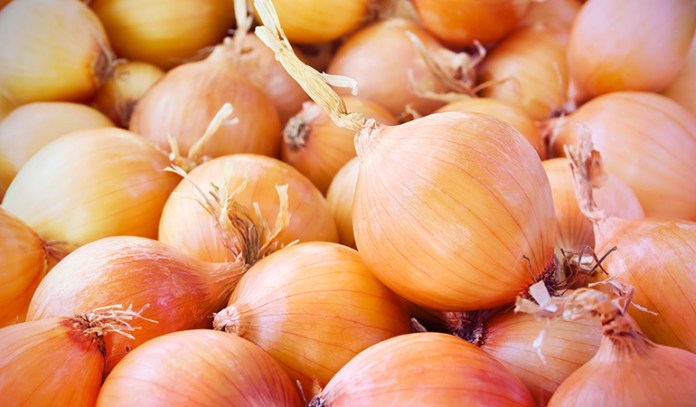The main cause of digestive issues is the types of food we eat, due to which it is very important to keep a check on what goes into our mouths. Stomach pain, gas, and bloating are some common digestive issues caused by foods that contain a high amount of fermentable carbohydrates. A group of such carbs that are high in FODMAPs, which stands for Fermentable Oligo-, Di-, Mono- saccharides and Polyols, are known to cause digestive issues. Restricting their intake can have a remarkable effect on your digestive health. A food is either categorized as high-FODMAP or low-FODMAP based on a predefined cut-off level. A food will fall in the high-FODMAP category if it contains more than 0.3 grams of galactooligosaccharides or fructans; 0.2 grams more fructose than glucose; 4.0 grams of lactose; or 0.3 grams of either mannitol or sorbitol. Here are 5 FODMAP foods and their healthy, low-FODMAP alternatives.
1. Garlic

Garlic is very high in FODMAPs but restricting it in your diet is quite difficult. It is added to many sauces, dressings, and other processed foods so it may end up in your diet if you are not careful about it. The main type of FODMAP in garlic is fructan, which is present in a much higher amount if the garlic is fresh. Keep in mind that you should avoid garlic only if you are sensitive to FODMAP because it is actually beneficial to your health. If you want to strictly follow a low-FODMAP diet, you need to make a conscious effort to read labels carefully.
Low-FODMAP Alternatives:
You mainly use garlic to flavor food. So instead of garlic, you can use ginger, turmeric, chili, lemongrass, or fenugreek.
2. Onion

Onion is high in fructans, which makes it a high-FODMAP food. Since onion is also used to flavor food, it can end up in your diet through processed foods. Although all types of onions contain a high amount of FODMAP, all onions do not contain the same amount. Shallots contain the highest amount of fructans, whereas Spanish onions contain the lowest.
Low-FODMAP Alternatives:
Instead of onions, you can flavor your foods with basil, rosemary, thyme, asafoetida, chives, and parsley.
3. Wheat

Although wheat is not a concentrated source of FODMAP, it is one of the major contributors of FODMAPs because of the sheer quantity it is consumed in. It is very difficult for people who consume gluten to go through an entire day without having foods made of wheat, such as bread, cereals, pastries, pasta, and biscuits. You do not have to completely remove wheat from your diet, but you can try foods made with healthier alternatives.
Low-FODMAP Alternatives:
Brown rice, oats, polenta, quinoa, tapioca, and millets are healthier, low-FODMAP alternatives to wheat.
4. Legumes And Pulses

You may have experienced gas and bloating after consuming legumes and pulses. The main reason for this problem is the high galactooligosaccharide content of these foods. If you are a vegetarian, chickpeas, split peas, lentils, baked beans, black-eyed peas, and bread beans are great sources of protein, but they are high in FODMAP. There are other sources of protein available, which are low in FODMAP.
Low-FODMAP Alternatives:
Vegetarian low-FODMAP, protein-rich foods include nuts, seeds, and tofu.
5. Fruits And Vegetables

Some fruits and vegetables are very high in FODMAP as they contain fructose, fructans, galactooligosaccharides, mannitol, and sorbitol. Since they are very important constituents of a healthy diet, you do not have to remove them from your diet immediately. Instead, you should only swap high-FODMAP fruits and vegetables with low-FODMAP ones. Apples, cherries, peaches, pears, watermelon, figs, and mangoes are some of the high-FODMAP fruits and Brussels sprouts, cauliflower, mushrooms, snow peas, asparagus, and artichokes are some of the high-FODMAP vegetables.
Low-FODMAP Alternatives:
Low-FODMAP fruits include blueberries, bananas, kiwi, papaya, pineapple, oranges, and strawberries. Since all fruits contain fructose, make sure to consume only 1 or 2 servings per day. Low-FODMAP vegetables include carrot, eggplant, tomato, kale, spinach, capsicum, bean sprouts, and zucchini.
Everyone does not have to avoid foods high in FODMAP. In fact, it can actually benefit some people’s health. You should first consult with your doctor and see if avoiding high-FODMAP foods will actually benefit your health drastically. If not, you can continue consuming them in limited amounts.





